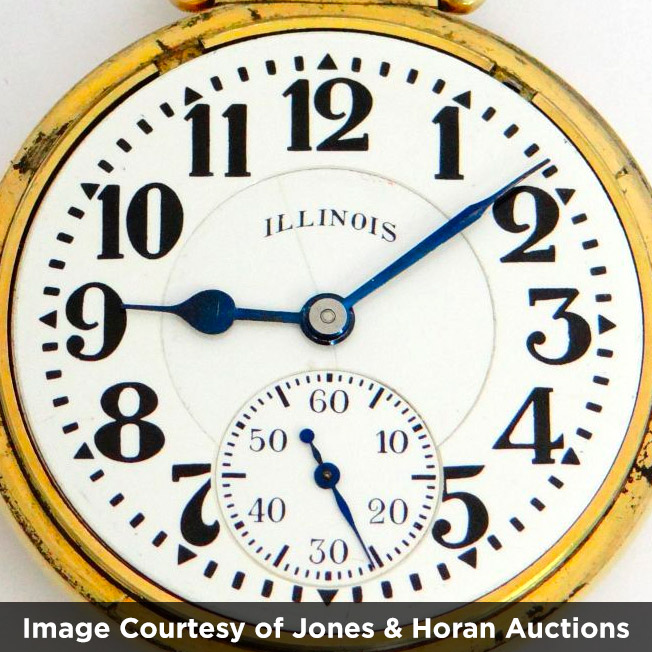Illinois Watch Company Bunn Special Dial: “Arrows In” vs. “Arrows Out”

(Image courtesy of Jones & Horan Auctions)
In December 1927, Hamilton Watch Company agreed to purchase the Illinois Watch Company factory in Springfield, Illinois. On January 1, 1928, Hamilton took control of the company while production continued under the familiar Illinois brand.
The new ownership leveraged the popularity of the Bunn Special watch in the railroad industry, eventually improving it with innovations like the Elinvar hairspring. The ownership transition also marks a change from the iconic “arrows in” Bunn Special dial to the “arrows out” dial, exhibited by the arrows at the five-minute intervals being reversed outward.
While this style change is typically associated with the Hamilton ownership transition, evidence supports that the update was already in progress before the sale of the factory. The dial circular published by the Illinois Watch Company in May 1927 illustrates the No. 113 dial, a silvered metal version of the familiar No. 114, with the “arrows out” style while the enamel No. 114 still exhibits the traditional “arrows in” style. This evidence shows that the style change coincided with the ownership shift rather than as a direct result.
Since an original dial is critical to the collectability of Bunn Special watches, collectors generally consider the “arrows in” dial appropriate before 1928 and “arrows out” during the Hamilton era. However, some overlap is expected during the transitional period.



Nathan,
Thanks for this tidbit. I’ve been collecting for a long time and had never heard that clear explanation of the arrows. Very much enjoy the site and am always learning something new. Keep up the good work, this is too great of a hobby to allow to go down in popularity, it is the living history of a time long past yet still demonstrative of the amazing quality, craftsmanship and advanced technology which was available over a hundred and fifty years ago ! Long before the auto industry adopted the assembly line or even before the internal combustion engine was known, these elegant little works of industrial art were radically changing the everyday lives of every American in almost every way !
Well said, Charles!